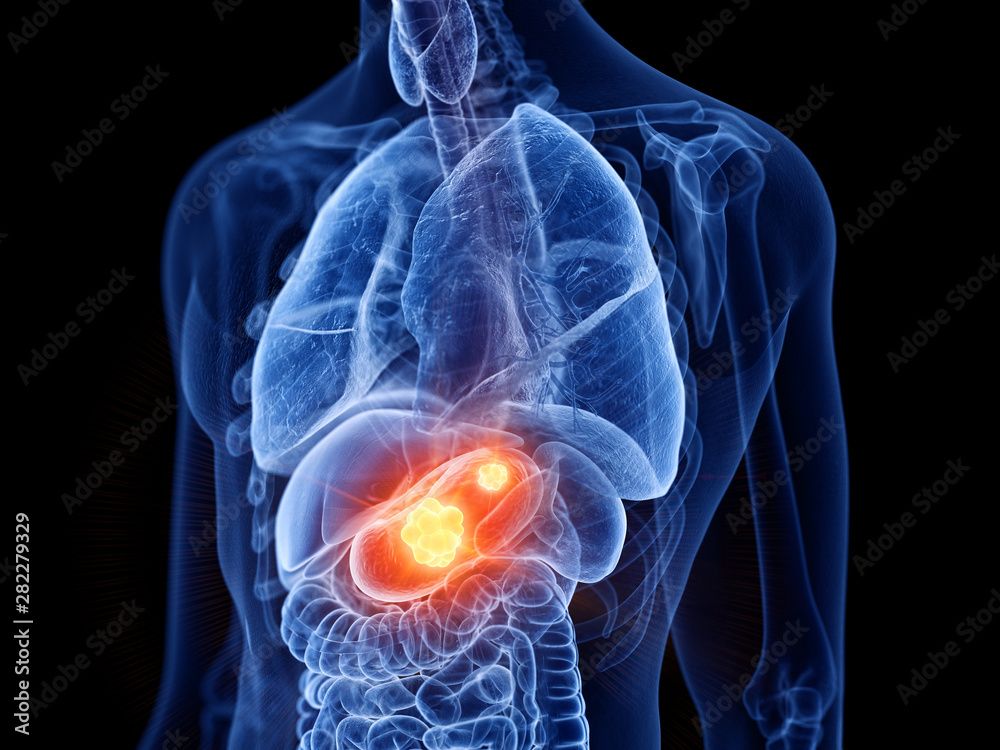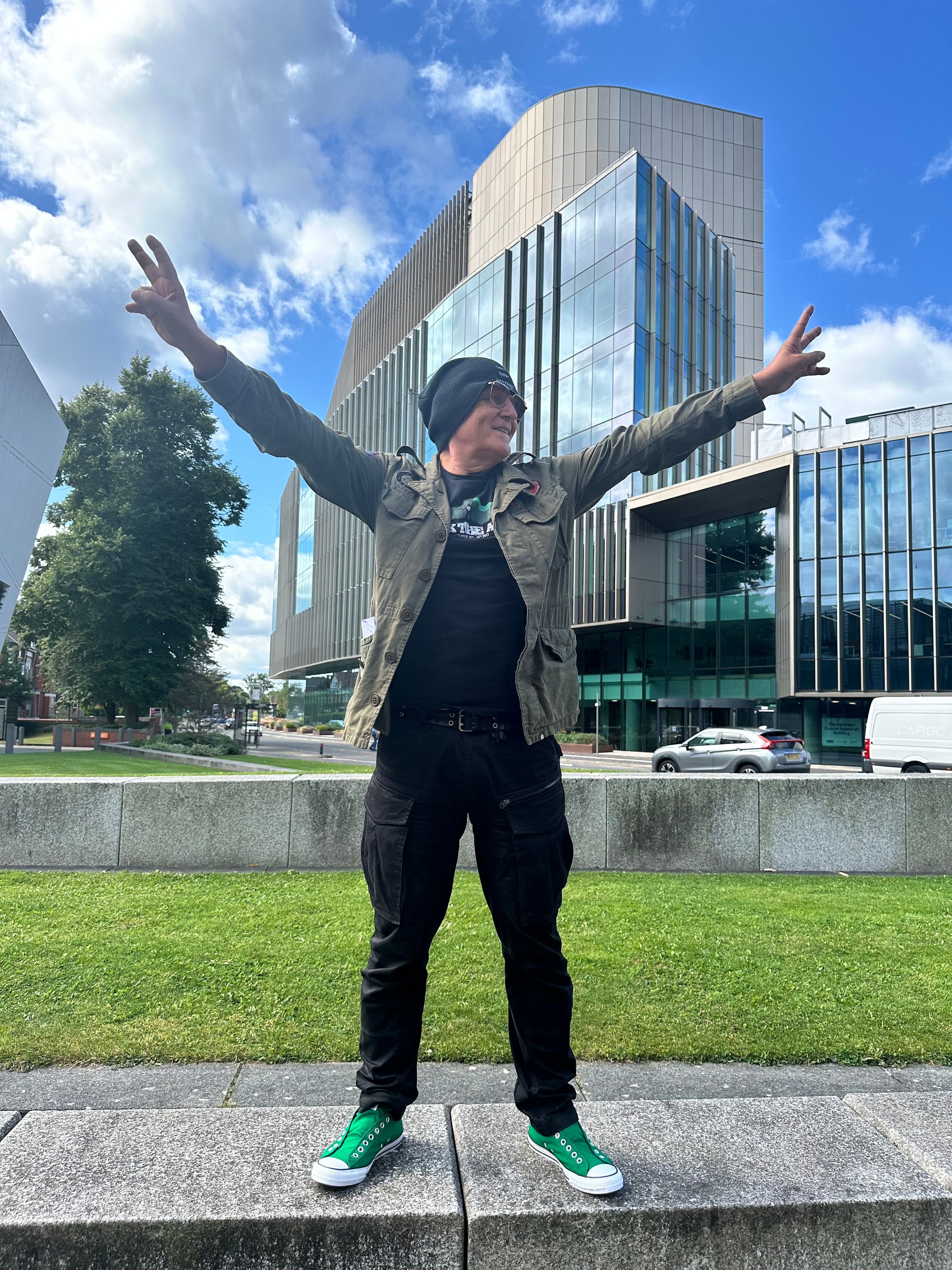Article
Targeting Gastric Cancer: Recent Advances Generate Fresh Hopes After Many Frustrations
Author(s):
In the hopes of recreating the successes achieved in other solid malignancies, researchers have evaluated many types of targeted therapy for the treatment of advanced gastric cancer.
In the hopes of recreating the successes achieved in other solid malignancies, researchers have evaluated many types of targeted therapy for the treatment of advanced gastric cancer. Regulatory approval of Herceptin (trastuzumab) in 2010 was a step forward, but only a minority of patients is eligible for the human epidermal growth factor receptor 2 (HER2)-targeting antibody therapy.
Success with other targeted agents has been lukewarm, particularly those directed against the epidermal growth factor receptor (EGFR), which has shown no benefit in clinical trials to date and, more recently, MET inhibitors, which also have missed their mark after a promising start.
More recently, studies evaluating Cyramza (ramucirumab), an antiangiogenic therapy that targets the vascular endothelial growth factor receptor 2 (VEGFR2), have translated into a survival benefit in the second-line setting and resulted in regulatory approval last year. Other targeting strategies are also beginning to make headway, and the first reports of immune checkpoint inhibition in gastric cancer emerged in 2014.
Valuable insights have been gathered from both failures and successes; improved molecular characterization of gastric cancer and biomarker identification have emerged as pressing needs. As we enter an era of unprecedented clinical trial activity in gastric cancer, with thousands of patients enrolled or set to be enrolled in large, randomized phase 3 trials of novel targeted agents, we may finally be on the path to changing the course of this disease.
Gastric Cancer: an Insidious Foe
Gastric cancer is a major health problem around the world; it is among the five most common types of cancer, with nearly 1 million new diagnoses annually, and was the third-leading cause of cancer-related mortality in 2012, with more than 700,000 deaths annually, according to the World Health Organization.
Surgical resection is the only cure for gastric cancer and, combined with recent improvements in postoperative adjuvant chemotherapy, there have been significant gains in survival for patients with early-stage disease. However, gastric cancer is an insidious disease, often asymptomatic in the early stages, meaning that a vast majority of patients present when the cancer is more advanced and inoperable.
For patients with unresectable, locally recurrent, or metastatic disease, chemotherapy is standard of care (SOC) and a wide variety of combinatorial chemotherapeutic regimens have been developed, but a common feature is their poor efficacy in advanced disease. Thus, these patients have a poor prognosis, with a median survival ranging from 10 to 14 months in advanced diseased.
Advanced gastric cancer represents an enormous unmet medical need and substantial resources have been committed to trying to reproduce the success of targeted therapies in other advanced solid malignancies. But, despite some regulatory approvals, this has proved to be far from straightforward in gastric cancer.
Unraveling Genomic Complexity
Its molecular complexity is the most challenging feature of gastric cancer, presenting a barrier to the identification of targetable genetic aberrations. While other solid malignancies are often driven by a defining oncogene and its associated signaling pathways, gastric cancer may be driven by many such essential pathways, with distinct tumor biology for different molecular and histological subtypes.
In recognition of its complexity and poor prognosis, The Cancer Genome Atlas (TCGA) chose gastric/esophageal cancer as one of more than 20 cancers that scientists would map as part of a federally funded project launched in 2010. Investigators from major academic institutions throughout the United States and several other nations, including South Korea and Australia, used six molecular platforms to analyze 295 primary gastric adenocarcinomas. Last year, Adam J. Bass, of the Dana-Farber Cancer Institute, and colleagues reported their findings in Nature.
The team identified four major genomic subtypes: tumors that tested positive for the Epstein-Barr virus, microsatellite unstable tumors, genomically stable tumors, and tumors with chromosomal instability. The distribution of the subtypes differed depending on the region of the stomach, as did the tumor’s molecular profile.
Notably, the genomically stable subtype was composed mostly of diffuse-type tumors, a particularly deadly type of gastric cancer that metastasizes rapidly for which there currently is no effective treatment. The study identified novel RHOA mutations or alterations involving activating proteins in the pathway in approximately 30 percent of samples in this subgroup, providing a potentially novel target for this form of gastric cancer.
Researchers hope the analysis will provide a springboard for stratifying patients for treatment and discovering new agents for testing.
HER2-Targeting Success
All members of the HER family of receptor tyrosine kinases, whose members include HER1 (or EGFR), HER2, HER3 and HER4, are expressed in gastric cancer and represent promising targets. HER2 is overexpressed or amplified in 8 percent to 34 percent gastric cancer cases, with rates varying depending on histologic subtype and location, and targeting the aberration has met with success.
Herceptin, which proved so potent in HER2-positive breast cancer patients, was evaluated as first-line therapy in HER2-positive gastric cancer. It was ultimately approved for this indication in 2010, following the pivotal phase 3 TOGA trial, in which Herceptin added to cisplatin and fluoropyrimidine extended overall survival (OS) by two months compared with chemotherapy alone, with no difference in toxicity profile. As a result, this combination has become SOC for HER2-positive advanced or metastatic disease.
Several other HER2-targeting agents are also being evaluated in clinical trials, including Perjeta (pertuzumab) and Kadcyla (T-DM1). Analogous to the CLEOPATRA trial in breast cancer, the ongoing phase 3 JACOB trial is evaluating the combination of Perjeta, Herceptin and chemotherapy (NCT01774786). Meanwhile, the phase 3 GATSBY trial is comparing Kadcyla with taxane chemotherapy in advanced gastric cancer (NCT01641939). Herceptin also continues to be investigated in gastric cancer, including in the phase 3 HELOISE trial in combination with cisplatin and capecitabine (NCT01450696).
Not all HER2-targeting agents have had such clear-cut success. The dual HER2/EGFR inhibitor Tykerb (lapatinib) has been evaluated in both the first (LOGiC) and second-line (TyTAN) settings. Both trials found no overall survival benefit upon addition of Tykerb to standard chemotherapy. However, the LOGiC trial did suggest that Asian patients and those under age 60 years might benefit. The TyTAN trial, which enrolled 261 Asian patients with HER2-amplified cancers, observed statistically significant improvements in OS and progression-free survival (PFS) among a prespecified subgroup of patients with strong HER2 positivity.
Disappointment in EGFR Targeting
Despite the success of HER2-targeting agents, only a minority of patients are HER2-positive and even among those who are, not all respond to Herceptin. A second member of the HER family, EGFR, is overexpressed in 27 percent to 64 percent of gastric cancers and has been associated with more aggressive histology and poorer prognosis.
None of the EGFR-targeted therapies tested to date (both monoclonal antibodies and tyrosine kinase inhibitors) have shown a survival advantage and, in some cases, have even proved potentially detrimental.
However, none of the failed phase 3 trials were carried out in biologically selected patient populations. Retrospective analyses of very small subgroups of patients in the EXPAND trial of Erbitux (cetuximab) suggested patients with high EGFR expression may derive benefit from this drug. Biomarker analyses are ongoing in the hope that they may help researchers identify a potential benefit of these agents.
In addition, trials of several novel EGFR agents are still ongoing. Of particular note, the phase 3 ENRICH trial of nimotuzumab in combination with irinotecan in the second-line setting is preselecting patients with high EGFR expression (NCT01813253). The results of this trial could seal the fate of EGFR-targeted therapy in gastric cancer.
MET Misses the Mark
A different receptor tyrosine kinase, the MET or hepatocyte growth factor receptor (HGFR), has also provoked significant interest in gastric cancer. Overexpression of MET is estimated to occur in 50 to 60 percent of cases and is associated with poorer prognosis.
Until recently, several MET-targeting agents were in late-stage clinical development, but have been plagued by a string of disappointments. Most recently, all clinical trials of rilotumumab in advanced gastric cancer have been halted, following a planned safety review of the phase 3 RILOMET-1 study of rilotumumab in combination with epirubicin, cisplatin and capecitabine. An increase in the number of deaths was observed and the company reported that protocol-defined futility criteria would likely have been met at a March 2015 analysis. Also, recently reported results from a trial of tivantinib monotherapy (phase 2) in Asian patients with metastatic gastric cancer reported only modest efficacy.
Roche is continuing its development of the MET antibody MetMab (onartuzumab) in gastroesophageal cancer. The phase 3 MetGastric trial is designed to evaluate onartuzumab in combination with mFOLFOX6 versus placebo plus the same chemotherapy regimen in approximately 600 patients; the study is ongoing although it is not recruiting new participants (NCT01662869).
New Promise for Antiangiogenic Therapy
Currently, the therapeutic avenue proving most promising in gastric cancer is antiangiogenic targeting, though even this got off to a somewhat rocky start. Angiogenesis has long been thought to be a promising target for cancer therapy, given its role in supporting tumor growth and metastasis. The vascular endothelial growth factor receptor (VEGFR) pathway is a central regulator of angiogenesis and thus has been the focus of efforts to target this process. All VEGFRs and their VEGF ligands are overexpressed in gastric cancers (36 to 40 percent) and are associated with tumor aggressiveness and poor prognosis.
Avastin (bevacizumab) is a major player in antiangiogenic therapy and has gained regulatory approval for the treatment of other solid malignancies. It was studied in the first-line setting for advanced gastric cancer in the phase 3 AVAGAST and AVATAR trials. Both studies failed to show an overall survival benefit, though there were significant improvements in several secondary endpoints, including overall response rate (ORR), PFS and one-year survival in the AVAGAST trial.
Bevacizumab targets the ligand VEGF-A, but inhibitors of VEGFR have also been examined, including Sutent (sunitinib), which continues to be studied, but has proved disappointing to date. These VEGFR inhibitors, however, were multitargeted tyrosine kinase inhibitors and did not solely inhibit VEGFRs. Ramucirumab is a monoclonal antibody that specifically targets VEGFR2.
Following positive results from the phase 3 REGARD study, ramucirumab was approved in April 2014 as a single agent for second-line treatment of patients with gastric or gastroesophageal junction (GEJ) cancer whose disease progressed after first-line platinum and/or fluoropyrimidine-containing combination therapy. This was followed in November 2014 by approval for combination of ramucirumab with paclitaxel on the basis of the phase 3 RAINBOW trial.
In the REGARD trial, ramucirumab monotherapy led to a significant improvement in OS (5.2 months versus 3.8 months), PFS (2.1 months versus 1.3 months), ORR (3.4 percent versus 2.6 percent), and disease control rate (49 percent versus 23 percent). Although rates of hypertension were higher in the ramucirumab arm, ramucirumab treatment was not associated with higher rates of other toxicities. There was no increase in the risk of thromboembolic events, fistula formation, or gastrointestinal perforation, as seen for other antiangiogenic agents.
The RAINBOW trial confirmed the efficacy of ramucirumab in the second-line setting and demonstrated its efficacy and tolerability in combination with standard chemotherapy, with significant improvements in OS (9.6 months versus 7.4 months), PFS (4.4 months versus 2.9 months) and ORR (28 percent versus 16 percent) observed. Patients in the combination arm also reported a reduction in pain and other improvements in quality of life. Side effects were manageable and included neutropenia, leukopenia and hypertension. Clinicians are currently developing algorithms to guide in decision making with regard to monotherapy versus combination therapy.
Other antiangiogenic therapies continue to be evaluated in gastric cancer and this has once again become a promising avenue of research.
PD-1 Agents Tested
Among the most interesting of the other novel targets under study for gastric cancer are the immune checkpoint inhibitors, which boost the patient’s antitumor immune response by targeting proteins involved in an inhibitory signaling network that dampens down cytotoxic T-cell activity.
The first data on immune checkpoint inhibition in gastric cancer were presented at the 2014 European Society for Molecular Oncology meeting for Keytruda (pembrolizumab), an inhibitor of programmed death 1 (PD-1). Updated data from the gastric cohort of the phase I KEYNOTE-012 demonstrated an ORR of 22.2 percent and 33.3 percent, respectively, by central and investigator review, in findings presented at the 2015 Gastrointestinal Cancers Symposium. Side effects were similar to those reported for Keytruda in other studies, with very few grade 3 or higher. Keytruda is now being evaluated in the phase 2 KEYNOTE-059 study as monotherapy and in combination with chemotherapy in recurrent or metastatic gastric cancer (NCT02335411).
Biomarkers Key to Future Research
The heterogeneity of gastric cancer may have limited the success of targeted therapy to date. Many trials have likely broadly applied a one-size-fits-all approach, in large part due to the lack of validated biomarkers available to guide patient selection.
Researchers have increasingly recognized the importance of tissue collection from both positive and negative trials to aid in biomarker discovery and numerous biomarker studies are now ongoing. In the AVAGAST study of Avastin, researchers successfully collected tissue and serum samples from more than 90 percent of study participants, and identified two candidate biomarkers.
Technological advancements are also allowing improved molecular characterization of gastric cancer, which is aiding in biomarker discovery and the identification of novel therapeutic targets, including those suggested by the TCGA analysis.




